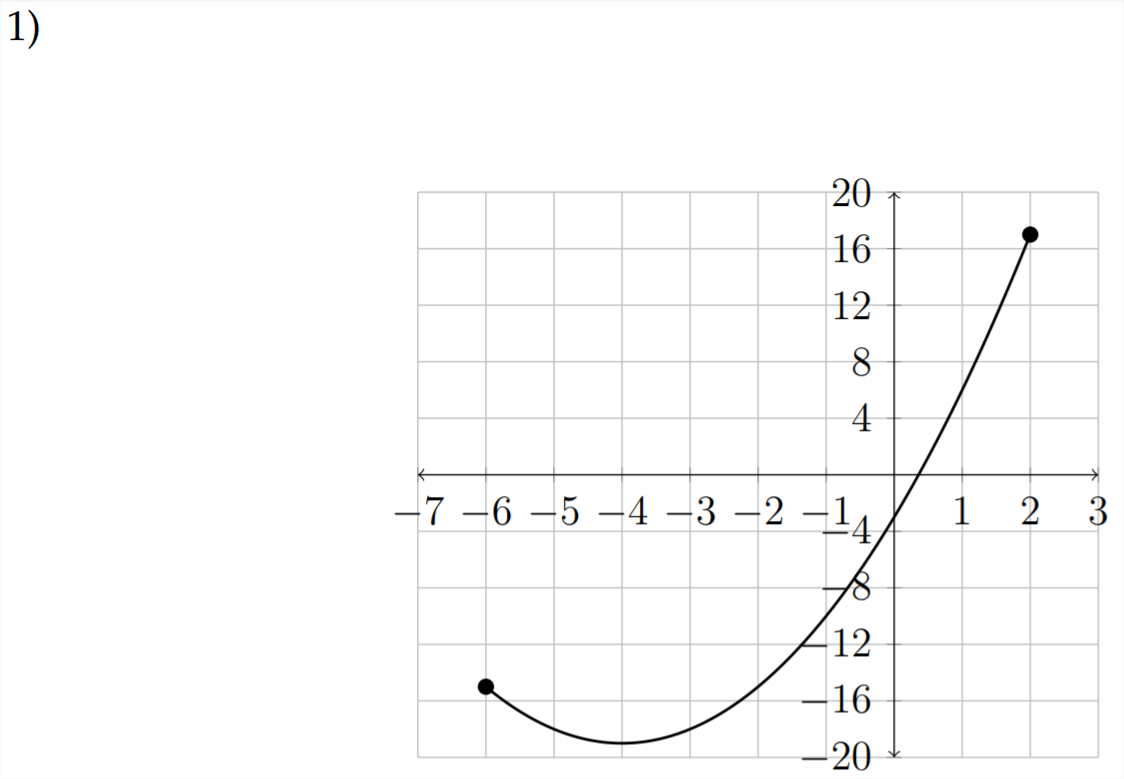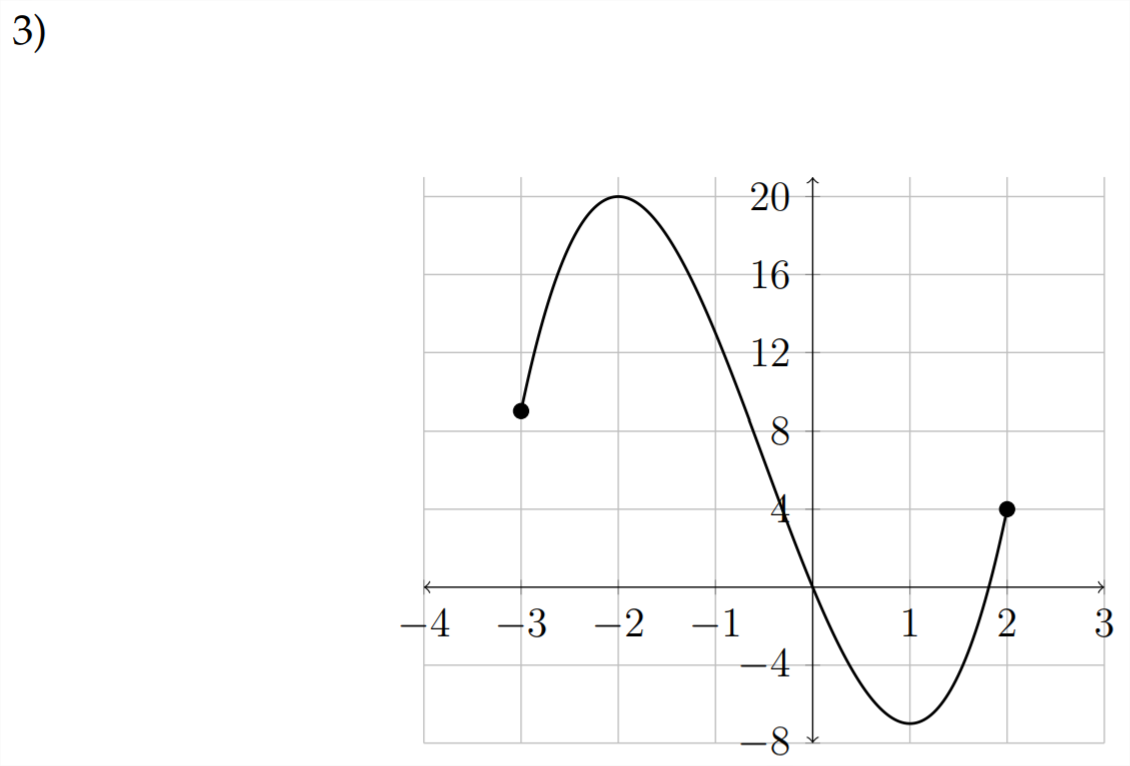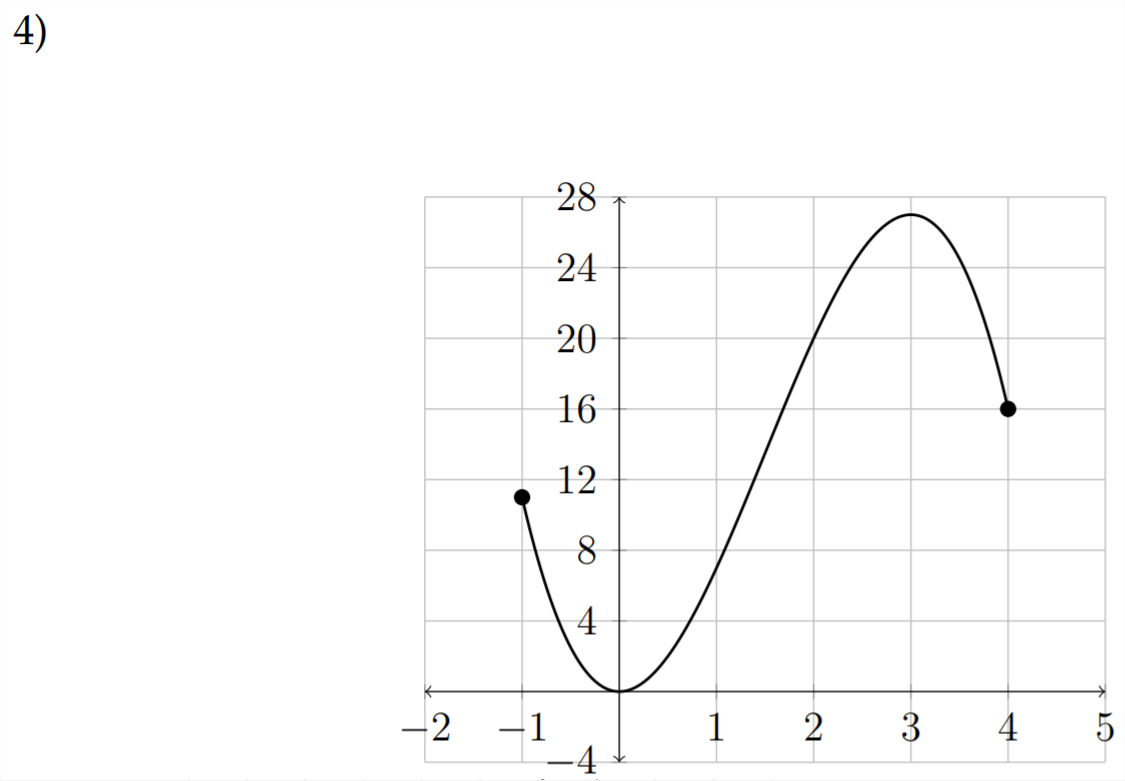4.3: Valores máximos y mínimos
- Page ID
- 111937
Encontrar los valores máximo y mínimo de una función puede ser muy útil en aplicaciones. Esto generalmente se conoce como “optimización”. Posteriormente, examinaremos el uso de la optimización en problemas de aplicación. Por ahora, utilizaremos gráficas para encontrar los valores máximo y mínimo de la función.
En el siguiente ejemplo, el valor máximo de función en la región mostrada es 100. Esto ocurre donde\(x=2.5\)

En la gráfica a continuación, la función muestra un valor máximo de 5 at\(x=-1\) y un valor\(a\) mínimo de -27 en\(x=3\)
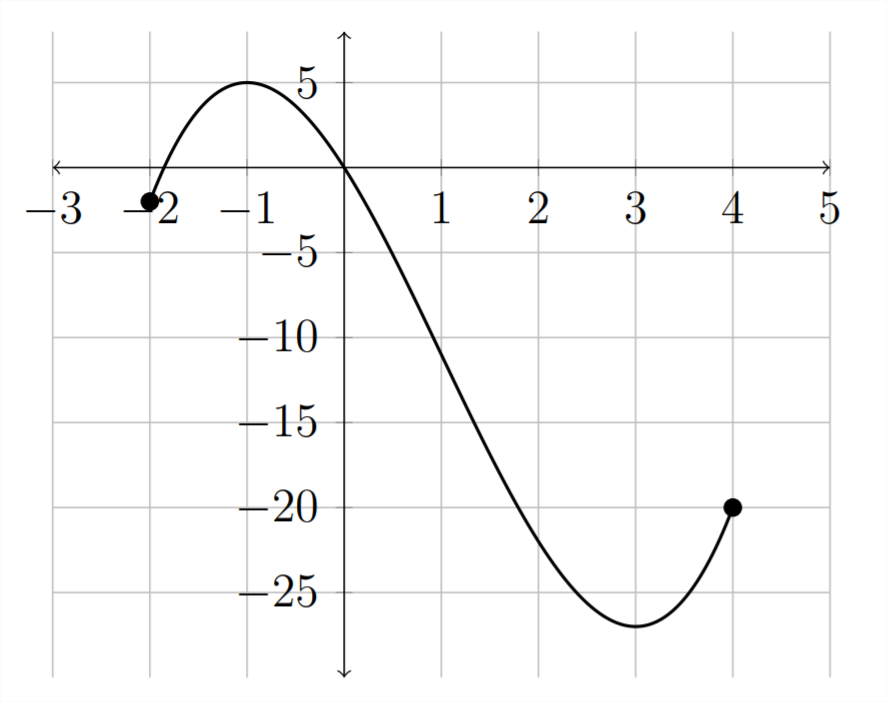
Podemos utilizar la calculadora gráfica para encontrar valores máximos y mínimos. En el cálculo los valores máximo y mínimo se pueden encontrar algebraicamente.
Los valores máximo y mínimo también son útiles para determinar dónde está aumentando o disminuyendo la función. En el ejemplo anterior:
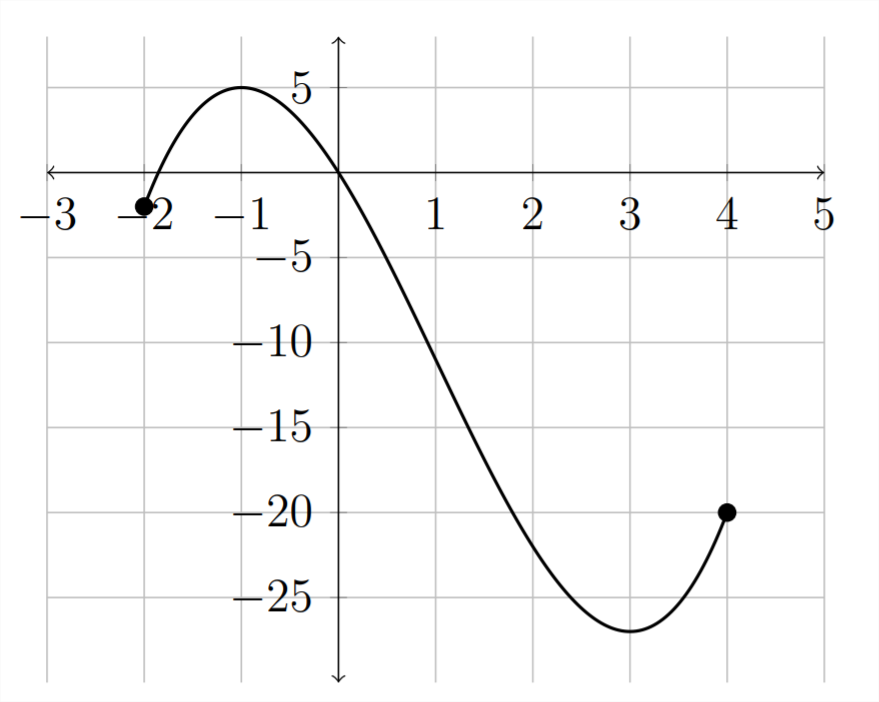
La función está aumentando entre\(x=-2\) y\(x=-1,\) luego otra vez de\(x=3\) a\(x=4 .\) Entonces diríamos que los intervalos en los que la función está aumentando son\(-2 \leq x<-1\) y\(3<x \leq 4\) o, usando notación de intervalos, [-2, -1) \(\cup(3,4]\)
El intervalo en el que la función está disminuyendo es\(-1<x<3\) o (-1,3).
Determinar el dominio y el rango para cada función dada. A continuación, determinar los valores máximo y mínimo para la función y los intervalos en los que la función está aumentando o disminuyendo.
